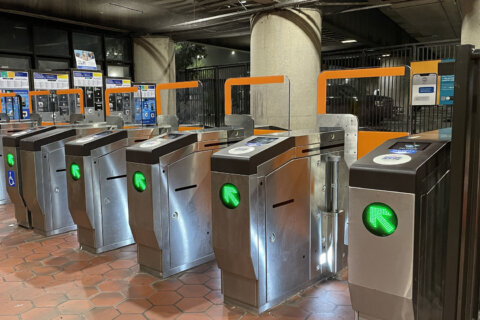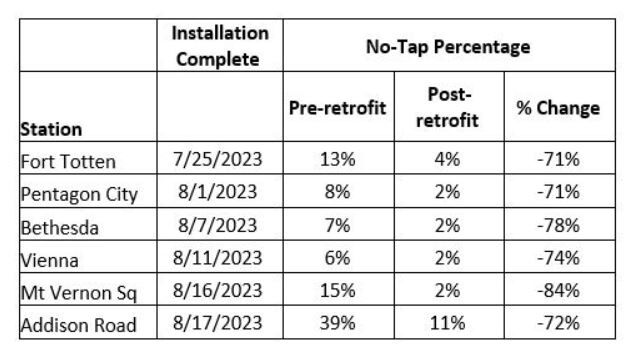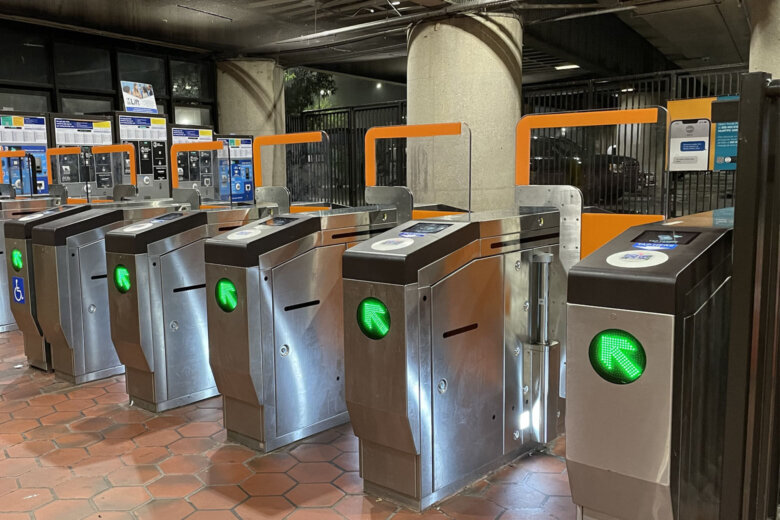
The new higher fare gates at Metro stations are actually curbing fare evasion, according to the transit agency’s newest data.
A month after Metro rolled out new, higher fare gates at six stations, it said Tuesday that fare evasion has decreased by more than 70% at those stations.
The new fare gates are “saloon door” shaped and increased the barrier height from 28 to 55 inches, making it more difficult to jump over fare gates. Metro is publishing the paid and unpaid ridership data on its online ridership data portal as the new fare gates are put up throughout the rest of the Metrorail system.
The findings for the six stations are outlined below, with Mt. Vernon Square having the largest decrease of 84% fewer riders not tapping in when they enter the system.

Metro has been cracking down on fare evasion after the transit agency has continually faced budget shortfalls. Total fare evasion in 2022 ended up costing the Metropolitan Transit Authority about $40 million in lost revenue, according to Metro projections.
The new fare gates were installed at Congress Heights on Tuesday, and installations at Federal Center SW, Wheaton and Court House are projected to be completed by early September.
Metro said the final design of the gates includes more robust hinges and a more powerful motor. Stations with the new barriers will also have higher fencing and emergency gates installed.
Randy Clarke, Metro general manager and CEO, said “the new faregate design is having its intended effect” based on the preliminary data.
“It is critical for Metro to collect as much fare revenue as possible and keep the system safe so we have a transit system worthy of this great region,” Clarke said in a statement.









